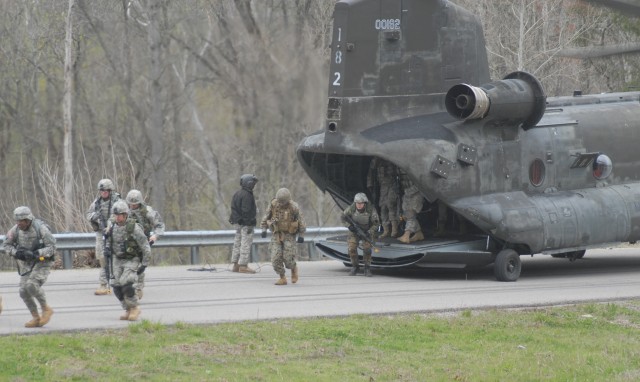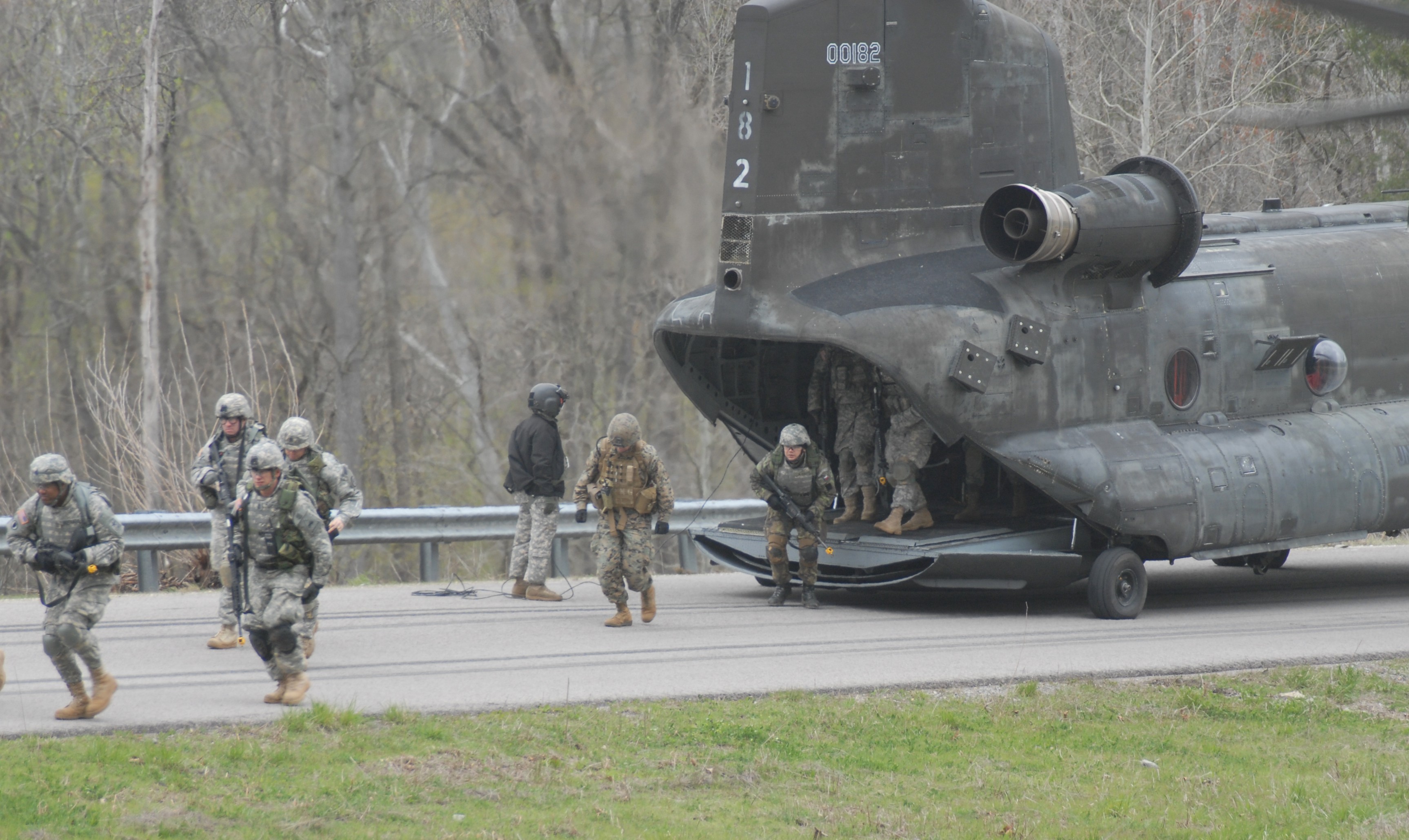Thursday and Friday, 44 Fort Knox senior NCOs took up the challenge from Armor Center Command Sgt. Maj. John Troxell to participate in a Mangudai exercise.
One legend says 'Mangudai' was the name given to the special forces of Genghis Khan's Mongol army in the mid-14th century. The exceptional warriors were known for their fighting skills honed through harsh conditions, often surprising their enemies.
Now, the term has come to mean a hardcore leadership challenge, as brought to the modern American army by Gen. David Grange, the commander of the 1st Infantry Division. He re-instituted the challenge in the 90s for battalion commanders.
Some alumni (others prefer to call themselves survivors) of Grange's version of a Mangudai challenge brainstormed how the exercise could be introduced at Fort Knox.
A few months later, the first Fort Knox Mungadai challenge became reality.
Troxell said the leadership-developing exercise included a generous portion of physical challenges as well as intentionally vague orders to generate increased stress levels. Those vague orders encouraged creative problem- solving, followership, and cooperation.
The Knox version of Mangudai included 36 hours of combat operations without sleep, only one MRE, and none of the creature comforts Troxell calls "snivel" gear - i.e. cell phones, blackberries, gum, tobacco, coffee, or candy.
In addition, the NCOs were directed to don their body armor (with small arms protection inserts), Kevlar helmets, and fully-loaded rucksacks -- in other words, full battle-rattle. Furthermore, all NCOs drew an M-4, which they carried throughout the exercise, as well as ammunition magazines.
All told, the gear added another 80 pounds for each NCO to tote.
Before the 36 hours were up, the Mangudai "wannabes" marched approximately 18 miles, reacted to a sniper attack at the Redwing MOUT site, completed a Chinook air insertion drill, secured a pilgrimage route with an "improvised explosive device" scenario, put down an uprising via Stryker transport, conducted a live fire stress shoot, and finished the obstacle course containing 13 stations.
Troxell estimated the two-day event incorporated approximately 17 sessions of 30-minute cardiovascular workouts at near maximum capacity.
The challenges might sound like old hat for Soldiers with combat deployments. However, many of the participating NCOs are not in combat arms fields, such as 1st Sgt. Paul Skrbin of the 113th Army Band, or Command Sgt. Maj. Leon Archer, of Ireland Army Community Hospital, or Master Sgt. Michael Bostic from the Staff Judge Advocate office.
As one NCO commented when he signed for his weapon in the wee hours Thursday morning, "These aren't rubber; this is the real deal -- and real ammo -- wow, this could be dangerous. It's been a while since I handled a real one."
The Mangudai exercise also included two international students, one from the Czech Republic and one from Serbia, attending the Basic NCO Course at Fort Knox.
In addition, Training and Doctrine Command's Drill Sergeant of the Year, Sgt. 1st Class Herbert Thompson, was on Fort Knox to observe OSUT training when he met Troxell, who asked if he'd like to participate in Mangudai.
Thompson responded, "Heck yeah. I'd be privileged."
After the exercise was complete, Thompson commented in a telephone interview from TRADOC headquarters at Fort Monroe, Va.
"(Mangudai) is an outstanding tool," Thompson said. "It's the best I've seen in my year of touring throughout TRADOC . You learn more about yourself and your leaders in that 36 hours than you could in six months."
A veteran of one combat tour and 10 years in the Army, Thompson said the exercise forces NCOs who have been trainers and observers to get back in the dirt again. Mangudai also reinforced safety issues; Thompson said senior leaders need to remember how much trouble they had firing, marching, and executing simple tasks even with their experience.
"How much harder would it have been for a young Soldier in training to accomplish (these tasks) with limited sleep'" Thompson asked.
He said it was a good take-away lesson and, in his own case, Thompson said the exercise provided him with a large dose of realism.
"As much as I hate to say it, I'm not as good as I thought I was," he said.
Other Knox NCOs agreed with Thompson's positive impressions.
Sgt. Maj. Daniel Borrero, from the Regional Confinement Facility, said his wife told him (Mangudai) should be done more often. He realized she was right and acknowledged, "It had been some time since I was pushed like that and it helps us all to remember the importance of the basics."
Sgt. Maj. Kevin Rogers, with the Law Enforcement Command, told Troxell, "The Mangudai Warrior (competition) accomplished everything you said it would - and more. Although hungry, I had a tremendous time."
Three mental health evaluations were conducted to help gauge the impact the physical stress was having on the NCOs' thought processes. Two mental health specialists, Sgt. 1st Class Roderick Reed, the NCOIC of the Behavioral Health Department at Ireland, and Sgt. Anthony Taylor talked with NCOs to monitor their orientation. After the final evaluation of the NCOs about 30 hours into the exercise, the two commented.
"They're tired, but their spirits are high," Reed noted.
Taylor and Reed were impressed with the mental toughness and teamwork they saw the NCOs display throughout the 36-hour trial.
"Soldiers may not believe what you say," said Taylor, "but they'll believe what you do."
"That's exactly the point of this exercise," Troxell said.
Lt. Col. James Brown, the 2nd Squadron, 16th Cavalry commander and a Mangudai warrior himself, told the NCOs in a closing ceremony Friday morning that the completion of a Mangudai exercise was a validation of credentials. While patches, awards, and medals on a uniform signify past accomplishments, Brown said achieving Mangudai warrior status speaks of current skills and abilities.
He assured the 40 warriors that once the blisters healed, sleep patterns were restored and hunger pains were assuaged, they would be glad they endured the challenge.


Social Sharing